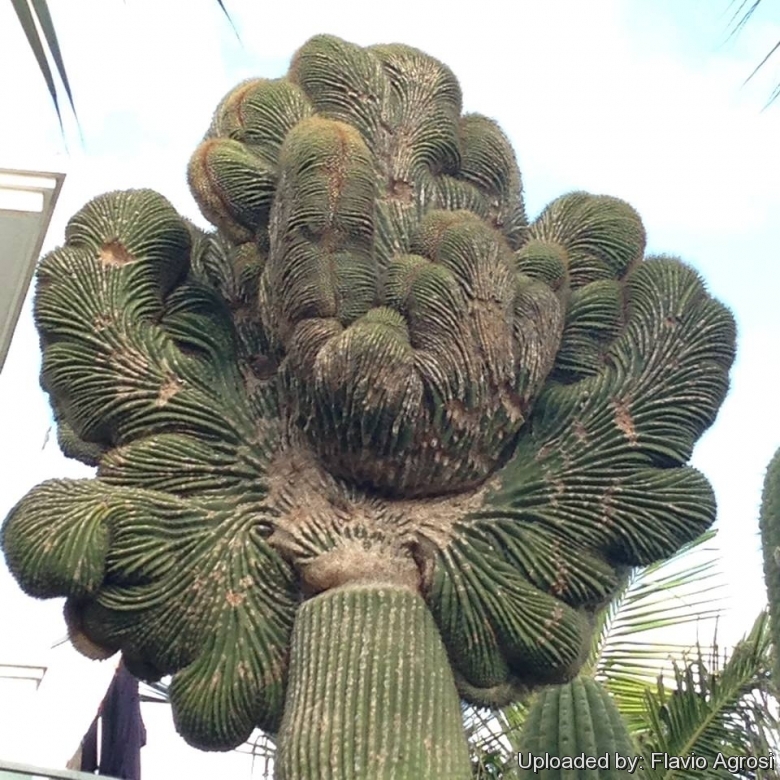
Neobuxbaumia polylopha f. cristata Photo by: Flavio Agrosi
Origin and Habitat: Mexico (endemic to a small area in the state of Guanajuato, Hidalgo, Querétaro, San Luis Potosí)
Habitat: The Neobuxbaumia polylophaSN|6399]]SN|6399]]s grow in limestone canyon wall, where they emerge majestically from the thorny forest, in this area there are several columnar species.
Synonyms:
See all synonyms of Neobuxbaumia polylopha
Common Names include:
ENGLISH: Crested Cone Cactus, Crested Wax Cactus, Crested Golden-spined Saguaro, Crested Golden Saguaro
Description: Neobuxbaumia polylophaSN|6399]]SN|6399]] is a very tall columnar cactus with a thick telephone pole-like stem , 7-12(-15) m tall; Often remain solitary but it can ramify forming a candelabra-like tree with little curved branches. This plant is characterized by the many, narrow, closely spaced ribs.
Crested form: The crested form (Neobuxbaumia polylophaSN|6399]]SN|6399]] f. cristata) - despite to its beauty - is very rare and sought after by collectors. It is a strong growing crested cactus that will slowly forms brain-shaped groups up to 1 metre (or more) in diameter with age.
Stem: Thick, fan shaped, deeply ribbed, green.
Ribs: Narrow, acute.
Areoles: Small, 4-6 mm apart with yellowish felt.
Spines: Yellowish turning grey as they age, thin, acicular, bristle-like, mostly pointing downward, approx 1 to 2 cm long. As ages, spines tend to fall out.
Central spines: 1.
Radial spines: 4-8.
Notes: The cause of cresting is not fully explained; biologists disagree as to why some plant grow in this unusual form. Some speculate that it is a genetic mutation. Others say it is the result of lightning strike or freeze damage, but whatever the stimulus, the growth point of the stem has switched from a geometric point, to a line, which folds and undulates as the crest expands. Though these crested Neobuxbaumia are somewhat rare (1 in 250,000), cresting occurs naturally, and can be encountered in many other cactus species.
In the ontogenesis a crest can appear any time, but development of crests on large columnar cactus species ( such as the saguaro Neobuxbaumia polylophaSN|6399]]SN|6399]]) in the early stages of ontogenesis is unlikely. On the other hand, small species may crest early already at the cotyledons stage.
Bibliography: Major references and further lectures
1) Gómez-Hinostrosa, C., Sánchez , E., Guadalupe Martínez, J. & Bárcenas Luna, R. 2013. Neobuxbaumia polylopha. In: IUCN 2013. "IUCN Red List of Threatened Species". Version 2013.2. <www.iucnredlist.org>. Downloaded on 17 March 2014.
2) James Cullen, Sabina G. Knees, H. Suzanne Cubey “The European Garden Flora Flowering Plants: A Manual for the Identification of Plants Cultivated in Europe, Both Out-of-Doors and Under Glass” Cambridge University Press, 11/Aug./2011
3) David Hunt, Nigel Taylor “The New Cactus Lexicon” DH Books, 2006
4) Edward F. Anderson “The Cactus Family” Timber Press, 2001
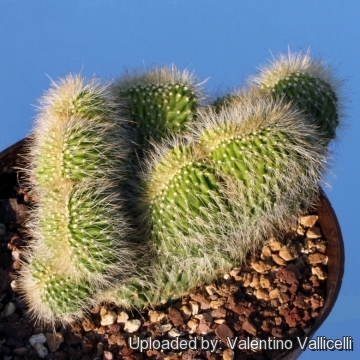 Neobuxbaumia polylopha f. cristata Photo by: Valentino Vallicelli
Neobuxbaumia polylopha f. cristata Photo by: Valentino Vallicelli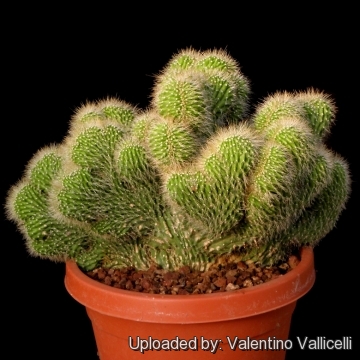 - A large well grown plant is truly an achievement. Photo by: Valentino Vallicelli
- A large well grown plant is truly an achievement. Photo by: Valentino Vallicelli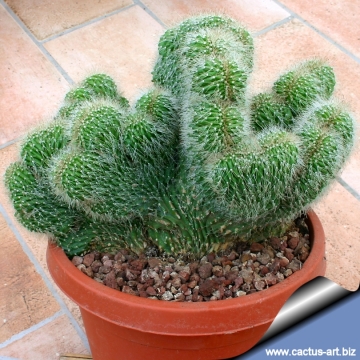 Neobuxbaumia polylopha f. cristata Photo by: Cactus Art
Neobuxbaumia polylopha f. cristata Photo by: Cactus Art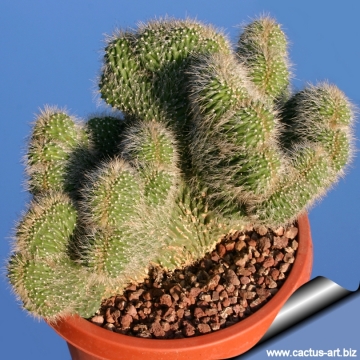 Neobuxbaumia polylopha f. cristata Photo by: Cactus Art
Neobuxbaumia polylopha f. cristata Photo by: Cactus Art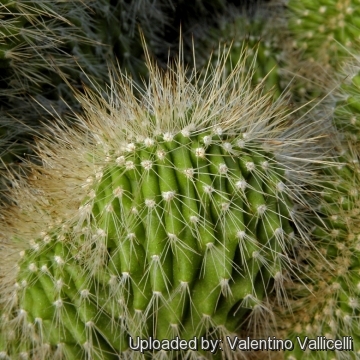 Neobuxbaumia polylopha f. cristata Photo by: Valentino Vallicelli
Neobuxbaumia polylopha f. cristata Photo by: Valentino Vallicelli Neobuxbaumia polylopha f. cristata Photo by: Valentino Vallicelli
Neobuxbaumia polylopha f. cristata Photo by: Valentino Vallicelli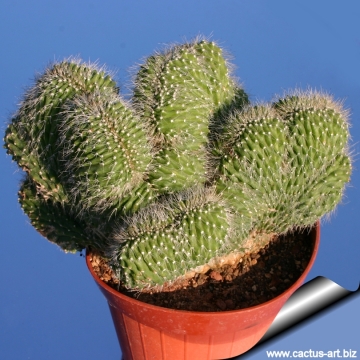 Neobuxbaumia polylopha f. cristata Photo by: Cactus Art
Neobuxbaumia polylopha f. cristata Photo by: Cactus Art Neobuxbaumia polylopha f. cristata Photo by: Valentino Vallicelli
Neobuxbaumia polylopha f. cristata Photo by: Valentino VallicelliCultivation and Propagation: Neobuxbaumia are of easy culture and can grow 15-20 cm a year. They are cold intolerant. Make sure they are not exposed to freezing temperatures ( Hardy to -2°C) or they may die. They need a well drained soil mix. It appreciates abundant water during the summer and, during its growing period but allow to dry fully before watering again, it is possible to add a fertilizer 6-6-18 from time to time. During the winter months they should be rather kept dry. Since they are rapid growers, they need plenty of space for their roots. Repotting should be done every other year, or when the plant has outgrown its pot. Sun Exposure: Light shade when young, full sun later. In mild climate they can be grown in rock gardens in full sun, in dry and sandy soils.
Propagation: Usually propagated by grafting or from cuttings in spring (let them dry till the ends callous well). Then replant them in fresh cactus soil that is ever so slightly moist, and keep it that way till they root)
Your Photos

by Valentino Vallicelli



















